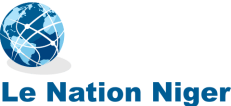Introduction
Combating climate change and averting, minimising and addressing its impacts are essential if we are going to realise the ultimate goal of lives well lived for all. The United Nations uses the language of sustainable development, including reducing the impact of disasters, as one means to secure the rights of present and future generations. To do so effectively requires a whole of society approach[1]- ensuring that all actors are given the opportunity to do their part – as well as a whole of government approach[2] – ensuring coherence between a host of reinforcing processes. For people and planet, we must commit to ensuring rapid implementation of the Paris Agreement and addressing the urgency of action on Loss and Damage in the UNFCCC climate change negotiations/processes. The Stakeholder Engagement Mechanism for Disaster Risk Reduction is an open, structured mechanism of 17 constituencies of non-state actors to participate in the implementation and monitoring of the Sendai Framework for Disaster Risk Reduction (Sendai Framework). It sees tremendous benefit to greater policy coherence and shared approaches between the Paris Agreement and the Sendai Framework and will be advancing such initiatives at COP27 and beyond.
A number of specific recommendations are outlined in greater detail below, but three experiences from disaster risk reduction come to the fore. Firstly, stakeholder inclusion at all levels is essential for any meaningful and sustained advance in combating the climate crisis. Second, solutions and strategies already exist within communities beyond the conventional UNFCCC mechanisms. Drawing on them would do much to strengthen integration and improve effectiveness, including on losses and damages. Finally, climate action and disaster risk reduction are two sides of the same coin – as climate change is mitigated, disasters are reduced, and as resilience is built in communities the impacts of climate change are tempered.
The IPCC reports not only clearly articulate the precipice upon which the world finds itself, but also demonstrate the negative impacts without riskinformed development. In order to counteract the impact, increase adaptation measures, and reduce vulnerability, we call for an enhanced coherence among previously siloed UN processes, especially DRR and climate action. The priorities of the Egyptian presidency, including prioritising adaptation, financing climate action, and advancing a just and equitable transition are shared by the disaster risk reduction community. Disaster risk reduction, humanitarian response, and climate change adaptation have the common objective of reducing vulnerability and enhancing capacity and resilience. A comprehensive disaster and climate risk management approach, starting with agreed-upon definitions, is key to making the shift towards integrated plans and policies, supported by shared risk understanding and inclusive institutions.
At a fundamental level, modern conceptions of development are increasingly outdated. Historical assumptions of where knowledge lies are rightfully coming into question both at the local and national levels. Local level experience and expertise is vital for development to be meaningfully owned and sustained by the populations it is meant to benefit. And the learning of so-called “developing” countries will need to be drawn upon as the “developed” world increasingly faces hazards new to them. Being hosted in Africa, this COP can serve to accelerate the pattern of knowledge exchange at all levels.
As members of the UNDRR Stakeholder Engagement Mechanism (SEM), we welcome Egypt and the African region’s prioritisation of adaptation. While mitigation is critical to ensuring the Paris Agreement’s 1.5℃ target, adaptation has consistently been sidelined in the process, risking lives and livelihoods, and wreaking havoc upon those living in poverty and other populations in situations of vulnerability. The need for a permanent, clear and tangible link between the objectives and timelines of the Paris agreement and of the Sendai Framework is more urgent than ever; COP27 could play an important role in formalising these links. COP27 has the potential to renew focus on policies that reduce risk by building synergies with the effort to implement the Sendai Framework and other critical global policy agreements. With this in mind, the SEM calls upon the Parties to the UNFCCC to adopt the following measures:
Source: UN Office for Disaster Risk Reduction
